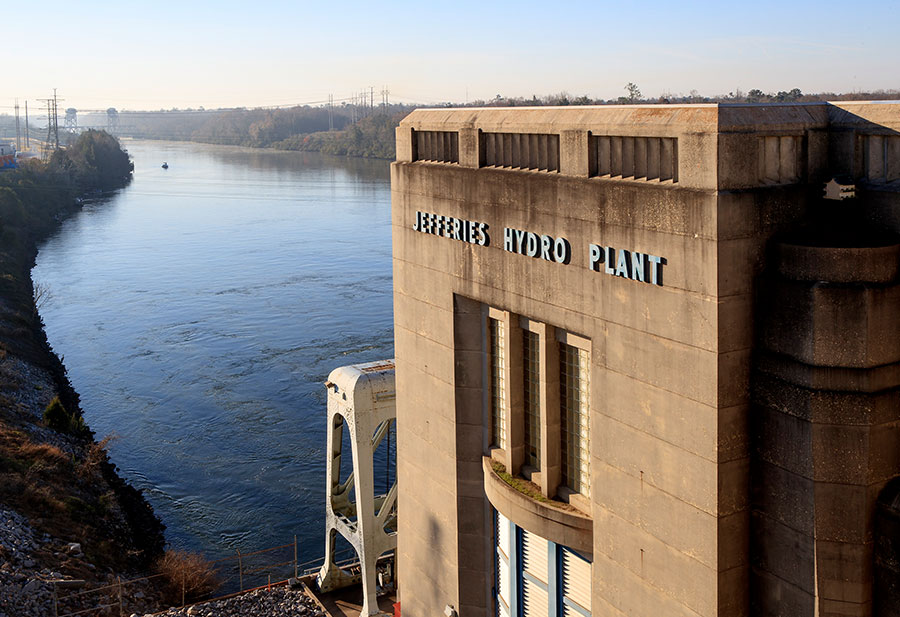Five Things to Know About Hydroelectric Power on World Water Day

Originally designated by the United Nations in 1993, World Water Day is observed internationally each year on March 22 in an effort to shine a light on the critical importance of fresh water. The day is given a new theme each year, and the 2022 event — themed “Groundwater: Making the Invisible Visible” — highlights the value of groundwater, along with the need to recognize it when making policies geared toward sustainable development.
Here at Santee Cooper, we’re thankful to have ready access to plentiful supplies of fresh water in our area — and also for the clean energy that hydroelectric power can deliver. Located at the Pinopolis Dam on Lake Moultrie, Santee Cooper’s Jefferies Hydroelectric Station has been generating green energy for more than 80 years now, with initial generation beginning in 1942 to support the Allied efforts during World War II.
To celebrate World Water Day and the clean, sustainable energy that water can deliver, we’ve put together this list of five interesting facts about hydroelectric power:
- Hydroelectric power cleanly captures energy from flowing waters. Many may ask, “What is hydroelectric power?” and “How does hydroelectric power work?” It’s a clean and renewable power source that works by capturing the energy of moving waters — including the United States’ rivers, streams and ocean tides — and turning it into electricity using turbines and generators. The process produces minimal greenhouse gas emissions and zero sulfur dioxide, nitrogen oxide or mercury emissions.
- It’s a leading source of green energy. Traditionally, hydroelectric power — also known as hydropower — has been the single greatest clean, renewable energy source in the United States. According to the National Hydropower Association, in 2019 hydropower represented 6.6% of total U.S. electricity generation and 38% of the nation’s renewable electricity generation.
- It’s a veteran on the energy scene. Humans have been harnessing the power of moving water for thousands of years, with the Egyptians employing Archimedes water screws for irrigation purposes as early as the third century B.C. and the Greeks using waterwheels to grind wheat into flour more than 2,000 years ago. Aided by the development of the modern water turbine, hydropower first became a source of electricity in the late 1800s — when the world’s first hydroelectric power plant went online in September 1882 along the Fox River in Appleton, Wisconsin.
- It can also power the economy. Hydropower is also a significant U.S. job creator, employing roughly 66,500 American workers in over 2,200 U.S. hydropower plants as of 2019. Hydropower has a strong potential for growth and job creation with significant numbers of high-paying engineering, manufacturing, construction and operations positions becoming available.
- It’s how Santee Cooper got its start. Jefferies Hydroelectric Station on Lake Moultrie represents the birthplace of Santee Cooper, as — along with two associated reservoirs, Lake Marion and Lake Moultrie — it was the first major project for the state-owned South Carolina electric and water utility. Today, the hydroelectric station’s five units can produce up to 140 megawatts (MW) of electricity.
To learn more about Santee Cooper’s Jefferies Hydroelectric Station at the Pinopolis Dam on Lake Moultrie — along with its connections to World War II and Popeye — check out this Santee Cooper News article. And to learn more about National Hydropower Day, read this news article from Santee Cooper.

